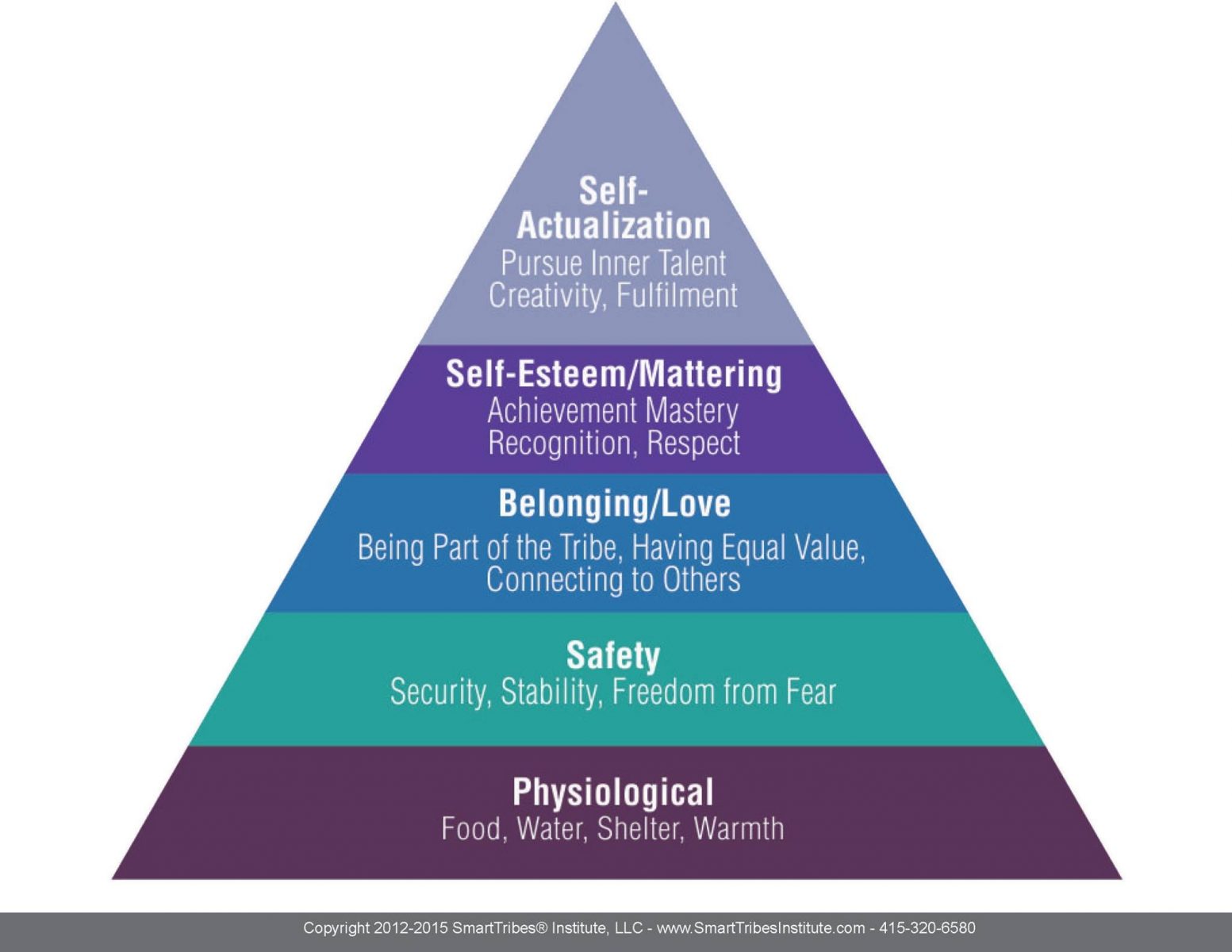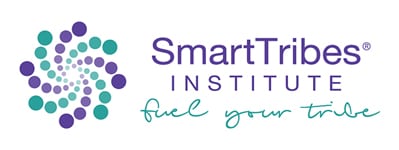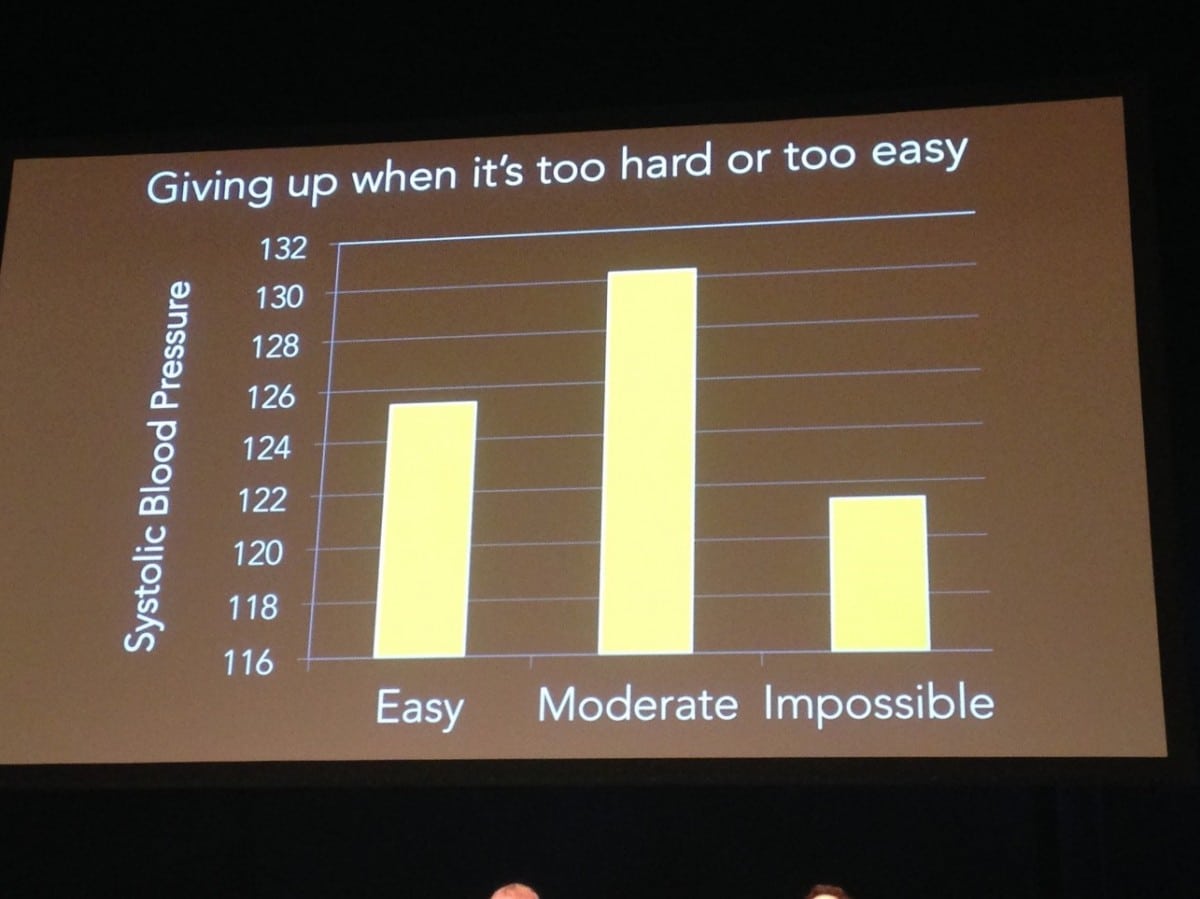
The Importance Of Safety Belonging & Mattering At Work & In Life
November 25, 2015The Key To Developing Influence
December 1, 2015
*As originally seen on Forbes.com
Why do we fail at achieving goals?
The answer is in your brain—and your blood pressure.
And high blood pressure can help you keep goals on track.
Emily Balcetis, a social psychologist from NYU, recently explained how properly set goals boosts our systolic blood pressure (SBP), which is the measurement of our body being geared up and ready to act. If the goal is easy to achieve we get a nice spike. If it’s moderately hard but seems like a feasible challenge (harder than easy) we get a larger spike and thus more excitement in the body and sympathetic nervous system. But if the goal is seen as impossible our system writes it off, indicated below by SBP decrease.
So what does this mean? As leaders we have an opportunity to create greater neural activation around goals by ensuring we create systemic support. And when we strike a balance when setting goals the neural activation and systemic support help us to achieve them. Often present in goals, and especially present in stretch goals or “mind blower” needle movers are the following key factors:
- Psychological distance
- Social distance
- Spacial distance
The medial prefrontal cortex (MPFC) deals with the here and now. You’ll recall from previous blogs that when we light up, or activate, the MPFC it helps us to simulate goal achievement, to envision what it will be like to achieve the goal and what to do. But when goals seem too far away we get far less activation in the MPFC and thus far less simulation or envisioning how to achieve the goal and what it will be like.
So to succeed in goal setting, and especially in stretch goal setting, Balcetis’s research states we’ll want to:
- Plan for Obstacles – have a plan, a backup plan, and a backup plan to the backup plan. In the 2008 Beijing Olympics everyone was betting on Michael Phelps. He had already won 7 gold medals, and his next event was his strongest—his eighth gold medal was nearly in the bag. But then tragedy struck: he dove into the pool and his goggles filled with water. Virtually blind he activated his backup plan—he started counting his strokes. He knew how many strokes he needed to get to the other end of the pool. So he focused, stayed calm, and yes, won a staggering 8 gold medals. Planning for obstacles while at the same time envisioning success boosts our systolic blood pressure—it increases our readiness to act.
- Create the Right Habits – Setting and sharing intentions make goals happen. When we make commitments to ourselves and others, and we discuss, sign off on them, and ask “what can I do today” to get closer to achieving our goal we boost systolic blood pressure too. These are called Implementation Intentions. Our team and our clients often ask “how will I move the needle this week?” because we call goals needle movers. This is why at our firm we set a minimum (“easy”), target (“moderate”), and mindblower (“impossible” per Balcetis, but we use the below techniques to boost systolic blood pressure to move them closer to “challenging”).
- Move the Goal Closer – above I talked about the 3 types of distance your brain associates with a goal: psychological distance, social distance, and spacial distance. Moving the goal closer requires us to envision it, to see ourselves achieving it (like Michael Phelps seeing himself win the race). Remember the goal must be specific and tangible (win this race) versus more abstract (get gold medal). With this “promotion” focus we activate the left side of our prefrontal cortex and the planning/envisioning gets stronger. We also light up the ventral striatum where we experience reward, and get a nice dose of dopamine to cause good feelings around the goal being achieved.
When we focus on the goal in our mind’s eye, Balcetis found that goals actually looked 30% closer (and thus more achieveable).

And when goals look closer, any progress we make towards achieving those goals actually feels easier, so we psych ourselves up and not out. And the goal feels 17% easier.

And finally… we can actually increase the speed at which we achieve the goal by 23% too!

This is how incredibly powerful your brain is. Wow.
To have an experience of moving your own goal closer, right now, click here. Looks closer now, yes? Feels easier now, yes? And best of all, you’ll achieve it faster now too.
Let me know how your goal setting and achievement has been improved by this blog!





